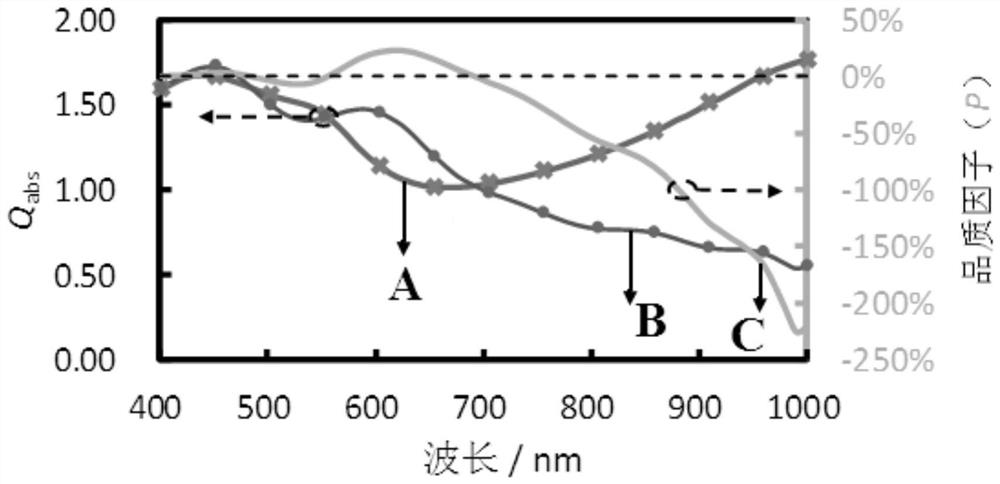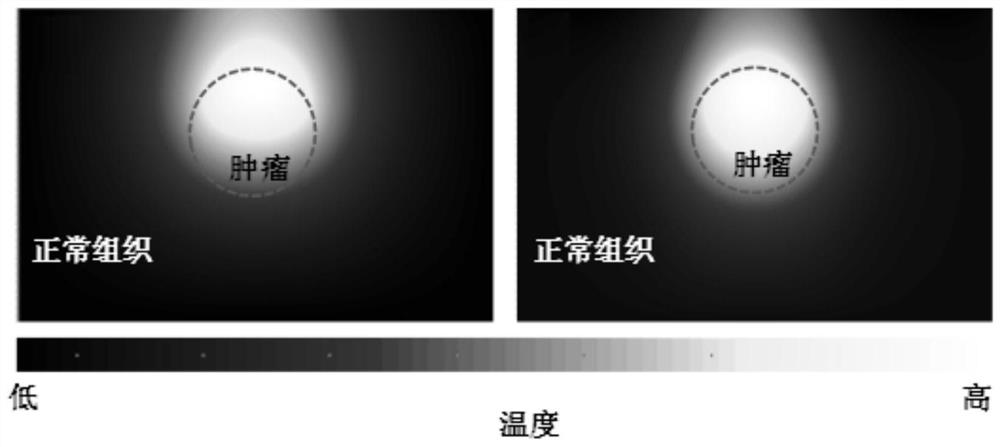Biological tissue temperature field passive regulation and control method based on optical phase change nanoparticles
A nanoparticle, biological tissue technology, applied in the field of tumor photothermal therapy
- Summary
- Abstract
- Description
- Claims
- Application Information
AI Technical Summary
Problems solved by technology
Method used
Image
Examples
specific Embodiment approach 1
[0017] Specific Embodiment 1: In this embodiment, a method for passively regulating the temperature field of biological tissues based on optical phase-change nanoparticles is completed according to the following steps:
[0018] 1. Select nanoparticles of different sizes, shapes and types whose crystallization temperature is between 40°C and 100°C and whose dielectric constant changes before and after the phase transition as the nanoparticles that meet the requirements;
[0019] 2. Draw the absorption factor Q of the qualified nanoparticles before and after the phase transition in step 1 abs The graph of the change with the laser wavelength, if there is a band where the absorption factor of the nanoparticle after the phase transition is lower than that of the nanoparticle before the phase transition, then the nanoparticle is a qualified nanoparticle;
[0020] 3. Draw a graph of the absorption factor of the nanoparticle surface coating that meets the requirements in step 2 befor...
specific Embodiment approach 2
[0025] Embodiment 2: The difference between this embodiment and Embodiment 1 is that the different sizes mentioned in step 1 are equivalent radius of 20-100 nm.
[0026] Other steps are the same as in the first embodiment.
specific Embodiment approach 3
[0027] Embodiment 3: The difference between this embodiment and Embodiment 1 or 2 is that the different shapes described in Step 1 are nanospheres, nanorods, nanotriangular sheets or nanocages.
[0028] Other steps are the same as those in Embodiment 1 or 2.
PUM
 Login to View More
Login to View More Abstract
Description
Claims
Application Information
 Login to View More
Login to View More - Generate Ideas
- Intellectual Property
- Life Sciences
- Materials
- Tech Scout
- Unparalleled Data Quality
- Higher Quality Content
- 60% Fewer Hallucinations
Browse by: Latest US Patents, China's latest patents, Technical Efficacy Thesaurus, Application Domain, Technology Topic, Popular Technical Reports.
© 2025 PatSnap. All rights reserved.Legal|Privacy policy|Modern Slavery Act Transparency Statement|Sitemap|About US| Contact US: help@patsnap.com



